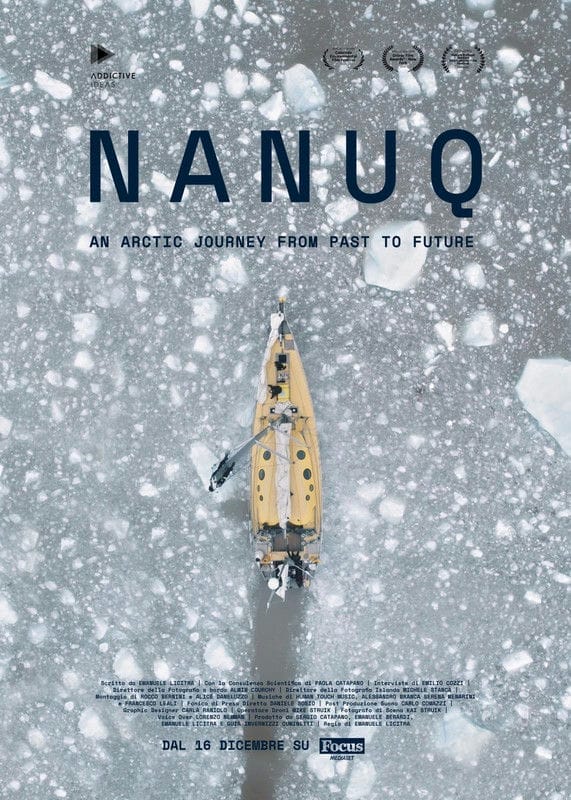Nanuq – an Arctic Journey from Past to Future
Film Info
Film Year: 2020
Film Duration: 55 min
Country: Italy
Language: English
Director
Emanuele Licitra
Film Category
Synopsis
1928, 81st parallel North, the Italia Airship, under the command of general Umberto Nobile, crashes into the North Pole icepack. Nine crew members survive. One dies on impact. Six crew members are trapped inside the airship envelope. They will never be found, and, as of today, their destiny is unknown. A story of tragedy and courage, driven by an ancient and anthropological thirst for discovery, the very thirst that leads Paola Catapano, director of audio-visual communications at the CERN centre in Geneva, to seek for the relic of the Italia airship, and to put together an international team of scientists, explorers and science communicators to pay homage to a lost past and give hope to a future which is in serious danger because of humanity’s irresponsible behaviour. 90 years later in the Svalbarb archipelago, Nanuq, a special sailboat designed to be sustainable and passive, fuelled by an unconditional love for knowledge, for progress, and for scientific research, crosses stretches of sea free of ice for the first time in decades following the journey of the Italia airship. Through time and memory, tales of life and death, the Polarquest expedition, lead by Paola, conducts scientific exploration around topical issues at the heart of the global environmental debate. From Iceland to the Svalbard archipelago, by way of the coasts of Greenland on the tracks of the airship Italia, Nanuq’s crew members tell each other about their research and their experience in the intrepid circumnavigation of this archipelago, just north of the Arctic Circle, one of the most inhospitable places on Earth. The crew members, working together to overcome the difficulties of such an extreme expedition, are the first ever to reach the record latitude of 82°07’ North. This is where they detect the presence of microplastics in the water, a consequence of the decay of the 300 tons of plastic produced every year by our consumerist economy. The crew are also the first ever to measure the flux of cosmic rays which invest the Earth, allowing them to understand anomalies connected to the Earth’s geomagnetic field and their relation to climate change. Aboard Nanuq, the crew travels through Time and memory, while reaching new certainties about Space. Thanks to drones equipped with thermographic cameras and devices for infrared light detection, the scientists on the Polarquest expedition are able to finally produce high definition maps of islands and coastlines which had previously only been documented through incomplete and partial satellite images. The crew produces 3D maps of the reliefs on these islands, completing the maps on Google Earth and, thanks to the multi-beam sonar employed to search for the remains of the Italia airship, they draw out new nautical charts of the Svalbard archipelago, complete with seabed imaging which had never been carried out before. In constant tension between a tragic past and the quest for a brighter future, Nanuq achieves extraordinary and unprecedented scientific results, making great steps forward in the development of solutions to the great threats which put humanity’s future in peril. But, as is the case in scientific research, observation, reasoning and experimentation can sometimes lead to failure or to the contradiction of assumed truths. This is the lifeblood of science, of progress, of research, and of hope: looking backwards to look forwards. In the most remote seas, home of one of the present’s greatest evils (microplastics) and of one of the greatest disasters of the past, lies the memory of the wreck of the Italia airship, rediscovered and remembered through a voyage which is driven by the need for discovery, commemoration, and knowledge, against the backdrop of a present characterized by uncertainty and nostalgia for a lost past, an alternative present, and a future which may be lost.


